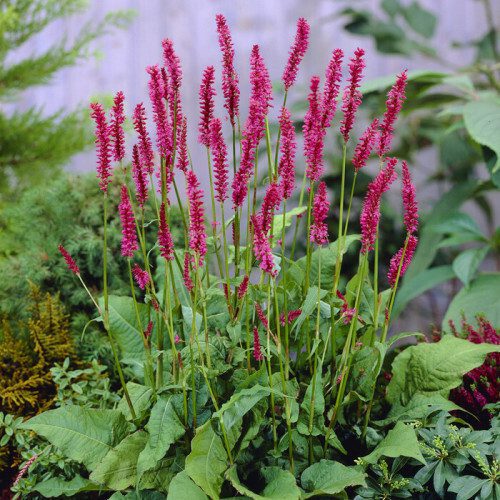Bring vibrant color and year-round interest to your garden with Persicaria! These versatile flowering plants boast a range of shapes and sizes, offering options for borders, containers, and even rock gardens.
They might be new to your vocabulary, but you’ve likely admired their beauty before – Persicaria are the stars of many summer and autumn gardens, continually producing new spurs that reinforce the trench side of ponds and canals.
A Genus Full of Surprises
Botanists have reorganized plant classifications in recent years, and Persicaria is a new name for some familiar favorites previously known as knotweed. While the name may be unfamiliar, the plants are a delightful surprise.
Those now classified under Persicaria encompass a wonderfully diverse group. Find bold and colorful additions to your borders, charming companions for your rock garden, and even a variety that thrives in summer containers.
Many Persicaria varieties are prized for their showy flower spikes, typically in shades of pink or red, that grace gardens throughout the summer and autumn. However, some boast stunning foliage that adds another layer of interest to your planting schemes.
Extending the Season’s Beauty
Even the Persicaria suited for rock gardens are helpfully late bloomers. These varieties bring a burst of fresh color when other alpine plants have faded, extending the season of visual interest in your garden.
Most Persicaria are hardy perennials, meaning they’ll return year after year. They begin contributing to the midsummer border display and continue to provide beauty well into autumn. This characteristic makes them perfect for tying the overall look of your borders together across the seasons. Their flowering overlaps with summer specialists and complements the emerging autumn flowers.
Beyond the Blooms
Varieties with beautiful foliage can be propagated through division from early spring right up until autumn. These divisions create more plants and add a dramatic pop of color when placed behind golden sedges.
Planting and Care
Most Persicaria varieties prefer consistently moist soil and thrive in full sun or partial shade. A few can be quite vigorous spreaders, but this is easily managed. Lifting and replanting them every few years in their designated space keeps them under control and provides extra plants to share with gardening friends admiring your beautiful Persicaria.
Choosing the Perfect Persicaria
Most Persicaria varieties appreciate full sun to partial shade and well-drained but consistently moist soil. While some are naturally vigorous, they’re easily controlled through division. Generally, these plants are resistant to pests and diseases. Their impressive foliage often takes center stage before the flowers even appear, and many varieties make excellent long-flowering groundcovers.
Companion Planting Ideas
Depending on the specific Persicaria variety you choose, consider pairing them with ornamental grasses like Miscanthus for a stunning textural contrast in the border. For shade-loving Persicaria, ferns or hostas create a harmonious combination.
























Comments are closed.